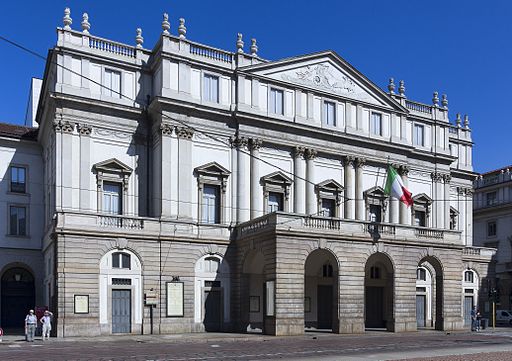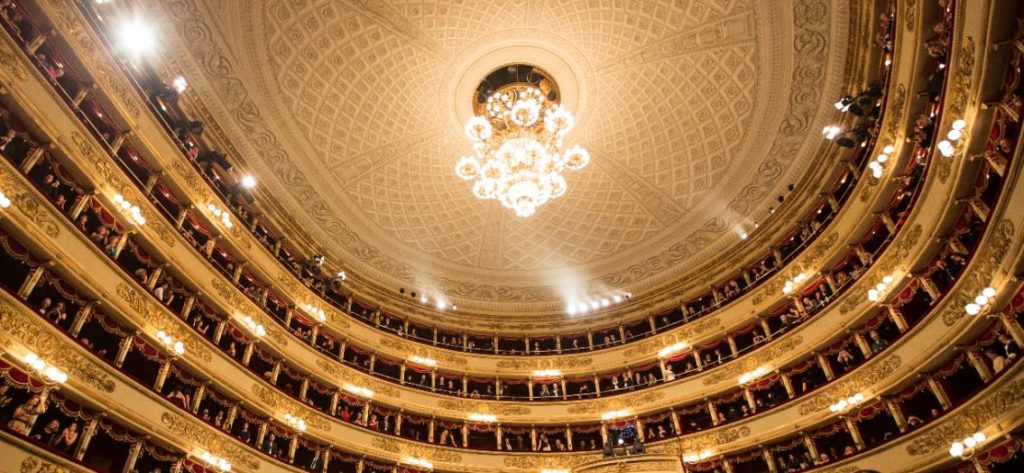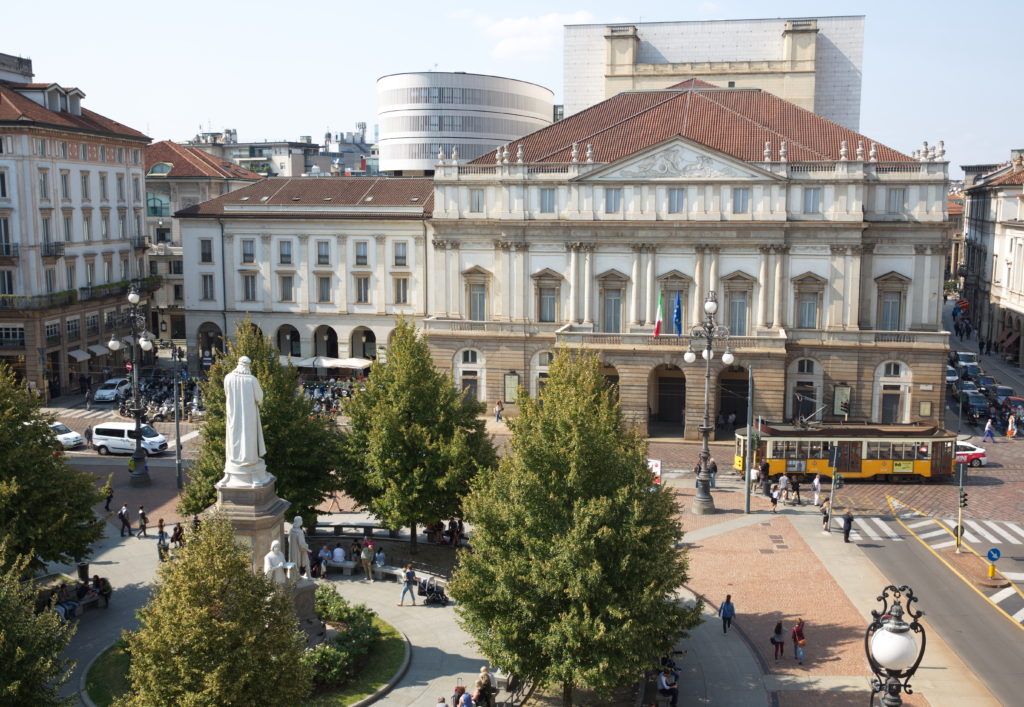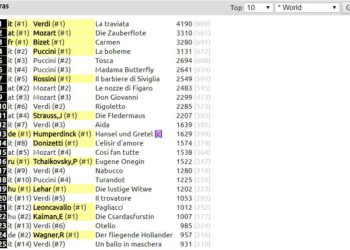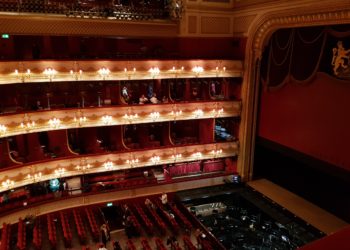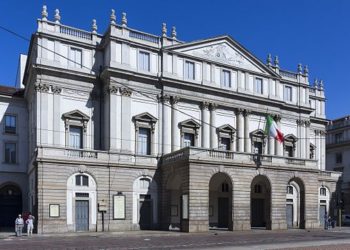On May 11, 1946, the rebuilt Teatro Alla Scala reopened with a historic concert directed by Arturo Toscanini.
Among the theaters affected by the war, Teatro Alla Scala was the first to get back on its feet.
The night between 15 and 16 August 1943, the Teatro Alla Scala had suffered a heavy bombardment. The bombs had caused the ceiling to collapse, destroying the fifth and sixth tier of gallery boxes with serious damage to the boxes below and the services. Only the stage was saved, thanks to the metal curtain lowered to protect it, but the pile of rubble reached the second tier of boxes. Despite this, the idea of demolishing what little remained did not prevail. “Winners and losers” both participated in facilitating its reconstruction.
The first step came from the German government, who, as Giuseppe Barigazzi recounts, “wanted to make a gesture of pity” by having the theater covered with a temporary roof. In early May 1945, the mayor of Liberation, Antonio Greppi, received a specific recommendation from Colonel Harry Hersenshon, a Chicago lawyer, who was acting as military mayor: “We want the Scala to be rebuilt as soon as possible.” Greppi then appointed Antonio Ghiringhelli, a friend of his and a wealthy entrepreneur of great ability, as an extraordinary commissioner. The government provided funding which, likewise, then as now, was slow in arriving due to the usual bureaucratic hitches. Ghiringhelli, who had already decided not to receive any compensation for his position, apportioned 60 million lire out of his own pocket – a huge amount for those times. The work was entrusted to the engineer Lorenzo Secchi, who has been the conservative architect of La Scala since 1932. Secchi knew all the secrets of the theater, including the magnificent acoustics of the hall, which he managed to restore despite the difficulties in finding the right materials in that difficult post-war period. Secchi promised to deliver the rebuilt theater by May of ’46, and the commitment was respected.
Toscanini, who had been in America since 1939, was called to inaugurate the reconstructed theater. Despite the strong desire to return to Italy to conduct the reopening concert, Toscanini wanted guarantees: he would not return to Italy with the Savoy family still present. This was a problem because the Referendum was set for June 2, while the inauguration concert was scheduled for May 11. The stratagem used by the protagonists of this story is ingenious and decisive.
Supposedly, Ghiringhelli, with the complicity of some friends, sent Toscanini a picture showing the Italian flag on the top of the theatre without the Savoy coat of arms. Next to the flag, he had also placed a sign that read “We want Toscanini”. This setting was staged just for the time of the photograph. Toscanini was convinced, and, at the age of 79, on April 27, 1946, the director landed in Milan. With a clap, he immediately tested the acoustics of the room: “It’s like before …” he exclaimed. He found again his own orchestra, which he put in line with his charisma. The concert was broadcast by the radio and loudspeakers in Piazza della Scala, in the gallery, up to Piazza del Duomo. Toscanini also forbade Mayor Greppi to say two words before the concert, regardless of whether he had the right. The Maestro was adamant: “Music must be separated from politics.” The concert was a triumph, a historic event full of meaning. Only opera music was performed: Rossini, Verdi, Boito, Puccini. With the singers Tancredi Pasero, Mafalda Favero, Stabile, Malipiero, Jolanda Giardino, Giuseppe Nessi, Carlo Forti, and with a young twenty-four year old Renata Tebaldi, and, finally, the choir instructed by Maestro Vittore Veneziani, who had been dismissed in 1938 for racial persecutions. When Tancredi Pasero sang Rossini’s Prayer of Moses, the theater was overwhelmed by intense emotion. And finally, a widespread, liberating cry accompanied Verdi’s “Va, Pensiero.” Music embraced and contained everything: participation, generosity, art, and beauty. Life began again. Then as now.




